Anzac Movement and Distribution 
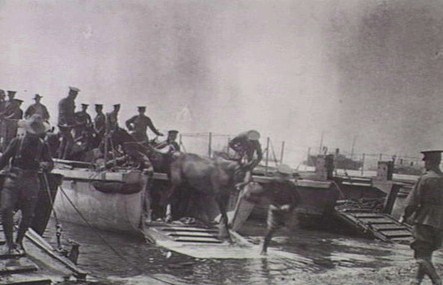
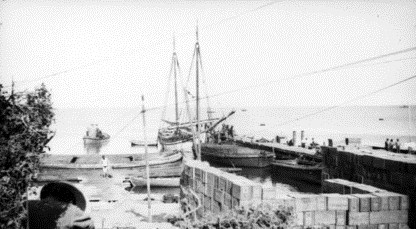
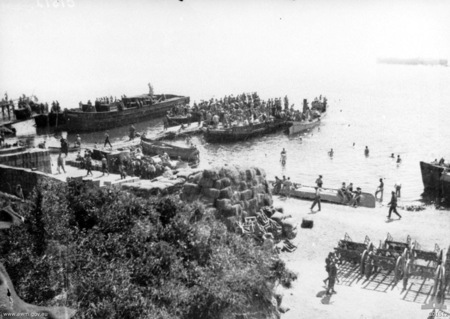


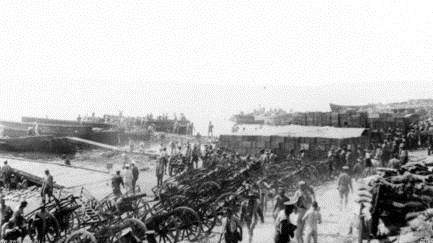
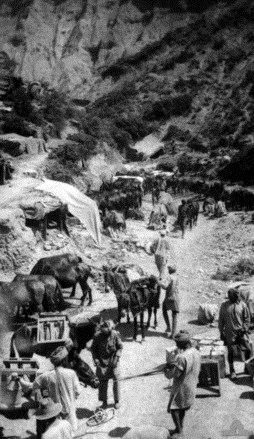

Movement into Theatre
A variety of small craft was used to supply the force from stocks on Lemnos, Tenedos and Imbros Islands offshore, which were themselves replenished from Egypt.
These included small steamships, schooners, torpedo boats, cargo and water barges, ships' boats and horse pontoons,
Australian War Memorial A03632
Animals required special barges to be landed on beaches - an idea not yet thought about for men, who had to disembark over the sides of ships' boats towed to the shore by small steamers or torpedo boats. These 'horse pontoons' show a remarkable similarity to WW2 landing craft.
Australian War Memorial P00821.003
Anzac Beach Unloading and Distribution
Rations on the beach were hollow stacked to provide partially protected working bays, however the task of resupply of the units had to go on under observation from the enemy during the day.
Australian War Memorial J02406
The barges remained – some loaded with water to provide operating stock to make up for the shortfall of locally won and distilled water. Replenishment from Imbros and Lemnos was generally done at night to avoid presenting obvious targets.
Australian War Memorial C01512
A railway was built by 11 Coy (1 RSD) on Watson's Pier to expedite unloading.
Australian War Memorial C00782
A link aconnecting North and South Beaches allowed distribution to and between depots, with a further extension by 11 Coy to Suvla Bay to be used as the port during the winter bad weather.
Australian War Memorial C01551
Forward Distribution
Forward distribution was by mule, mule cart or porterage.
Australian War Memorial C03459, J02706, J02738
Anzac Movement and Distribution 







